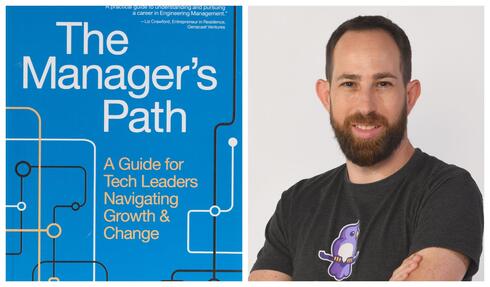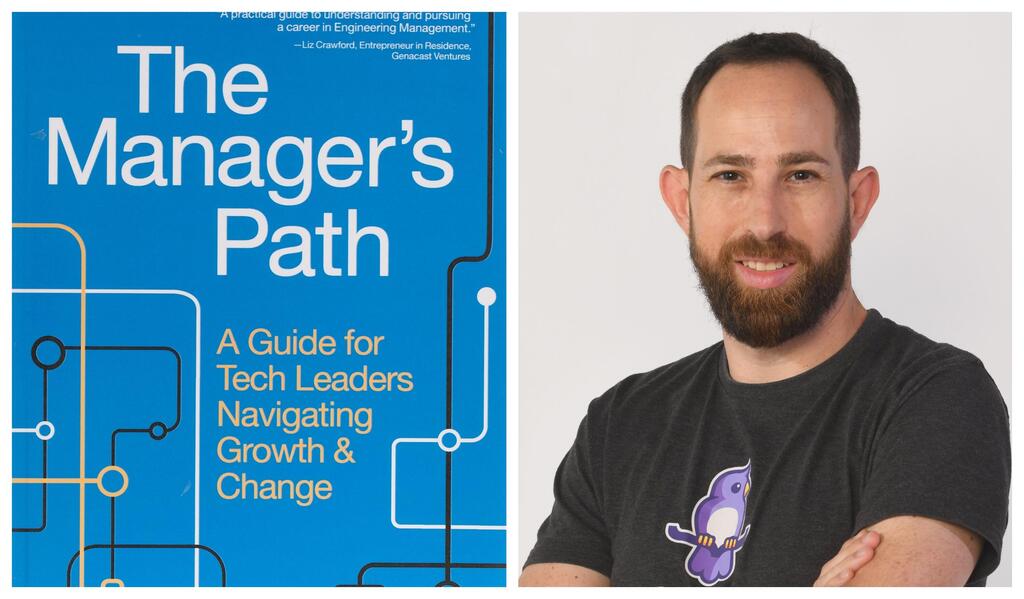
BiblioTech
CTech’s Book Review: How to climb the managerial ladder to success
Liran Haimovitch, Co-founder and CTO of Rookout, shares insights after reading "The Manager's Path: A Guide for Tech Leaders Navigating Growth and Change” by Camille Fournier
Liran Haimovitch is the Co-founder and CTO of Rookout, an IT company that built a solution for hybrid cloud architectures and large-scale deployments. He has joined CTech to share a review of "The Manager's Path: A Guide for Tech Leaders Navigating Growth and Change” by Camille Fournier.
Title: "The Manager's Path: A Guide for Tech Leaders Navigating Growth and Change”
Author: Camille Fournier
Format: Book
Where: Home
Summary:
“The Manager’s Path” is a book about understanding the practice of management at software development organizations. It covers every aspect of it chronologically, from your first (junior!) role through various leadership roles you may find as you climb up all the way to the office of the CTO.
Camille does a fantastic job of articulating the challenges and potential achievements of each step on the ladder. Through her fun and fluid writing, you will come to learn what is expected in order for you to excel at each position and how to prepare yourself for that next promotion you might be aiming for.
Important Themes:
The book is laid out as a ladder, going through each step from the beginning to the very top. Each episode is dedicated to a role, and in each of them Camille outlines vital elements such as:
- What does that position mean?
- What are the key activities that make up that role?
- How can someone best carry out those key activities?
- What skills should you cultivate to make it happen?
Just before the end of each episode, there are two essential sections: “Good Manager, Bad Manager” and “Assessing Your Own Experience.”
First, you’ll learn about patterns and anti-patterns for managers in that position. Like in coding, there are time-tested approaches for getting things done and known pitfalls you better look out for.
In the second, you’ll get to think back to your experience filling that capacity. Hindsight is a powerful tool, and you’ll often find that the insights from the back give you a fresh perspective on the past. Whether you’ll someday get to fill this role yet again or even just manage engineers holding it, those kinds of epiphany moments will do wonders.
In the final chapter, Camille takes a step back and touches upon culture-building in engineering organizations. You'll definitely want to read that if you are a technical leader with significant impact.
What I’ve Learned:
Reading this book, I have gone through dozens of (potential) learnings, but instead of a laundry list, I’ll focus on a handful of the most impactful ones.
First, remember that managing up is crucial. It doesn’t matter if you are a junior engineer, the CTO, (or the CEO!) - everybody has a boss. Your boss is the most critical person in your work life and will significantly impact salary, career development, work/life balance, and general wellbeing.
Second, when thinking of the “Big League” terms such as VP of Engineering, CTOs, and others, they often get mixed up. Some have a stricter definition, while others follow a “get it done” mentality. If you are in a smaller organization, knowing your options can help you better understand how to define your role. Learning the vocabulary is crucial if you are in a larger or global organization.
Mentoring is often the best way to advance your skills and career. Early on, focus on joining organizations that can offer mentorship. In some cases, especially later in your career, you will have to go outside the org chart or the organization to get mentorship. Just because it’s harder doesn’t make it any less critical.
Critiques:
Camille astutely touches upon the various engineering leadership roles and the soft skills required to excel in them in what feels like a timeless way. And yet, today, modern processes and tools make a massive impact on engineering quality, velocity, and culture.
We now know that optimizing specific engineering KPIs can add colossal value to the overall organization. Research papers, such as the State of the DevOps report by DORA, show this is science rather than conjecture.
I would love to see engineering leadership books such as this one going deeper into the technicalities of the roles, advising managers on which tools and techniques to adapt to empower and nurture their engineers.
Who Should Read This Book:
Every engineer should read this book. It doesn’t matter if it’s your first job or if you have been doing software engineering for a few decades. It makes no difference if you are looking for tech leadership and architect roles over people management roles. Take it from me, even co-founders and GMs will find plenty to learn here.
If you are heading out to retirement (or have done so already…) feel free to skip this one :)














